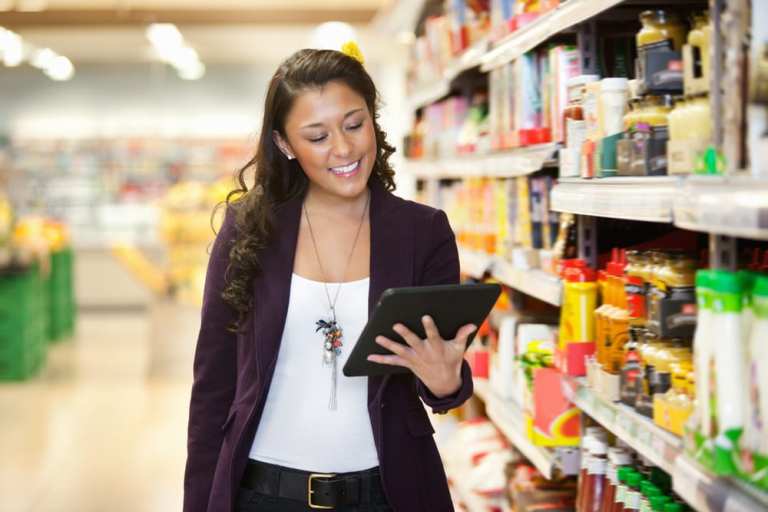Cashierless Innovation In Retail Gets A Fresh Boost In The UK

Can cameras replace cashers in retail? The grocery industry is making a go of it.
The latest effort comes from the U.K. According to a recent Wall Street Journal report, British grocer Tesco plans to open a “pick and go” or “frictionless shopping” store to the public next year, following testing the store technologies with employees. “Eventually it wants to use the technology, developed by Israeli startup Trigo Vision, in more of its smaller grocery stores,” the report said.
The move, of course, is inspired by what Amazon is doing in its Amazon Go grocery stores.
The Tesco plan, according to the newspaper, makes use of “150 ceiling-mounted cameras to generate a three-dimensional view of products as they are taken off shelves. In its recent demo, Tesco’s system detected shoppers as they walked around the store. It also identified a group of products when a person holding them stood in front of a screen, tallying up their total price.” The project also could grow to include app or loyalty card identification of shoppers to further the frictionless commerce and payments ideal.
European Role
The paper noted that many such retail innovation efforts for grocery start in Europe. “European efforts to scale up the technology in traditional stores — economically and without upsetting privacy advocates — will likely be closely watched in the U.S.,” the report noted. “Grocers in the U.K. often pioneer new technology like online delivery and self-payment kiosks that their American peers eventually adopt.”
Sainsbury’s also is taking part in the cashierless push. It has opened a checkout-free store in Holborn Circus, London, where shoppers use a smartphone app when they shop at the store, CNBC reported.
When consumers shop at the store, they can scan their selections, make payments through an app and scan a quick-response (QR) code to confirm their payments. The tills and checkout area of the store have been removed, and a help desk was created to assist consumers who want to make cash or card payments.
Sainsbury’s Group Chief Digital Officer Clodagh Moriarty said, according to the report, “This is an experiment rather than a new format for us — it hasn’t been done in the U.K. before, and we’re really excited to understand how our customers respond to the app experience.” Moriarty continued, “We’ll be with our customers and colleagues all the way over the coming months, iterating continuously based on their feedback before we decide if, how and where we make this experience more widely available.”
The news comes as reports surfaced in April across a variety of financial news conduits, among them CNBC, that Amazon would add “additional payment mechanisms” to its Go stores — and among those would be cash. The apparent payments policy shift comes amid criticism that cashless retail discriminates against unbanked consumers.
Amazon Go
And last fall, it was reported Amazon might open 3,000 Amazon Go locations by 2021. At the time, it was also reported the company launched an Amazon Go location in Chicago. That was the fourth Go location — and the first to open outside of Seattle, Amazon’s hometown. The first Amazon Go opened in 2018 in Seattle, where shoppers could make selections from a stock of sandwiches, snacks, meals and pre-made salads. Shelves are also stocked with meat, produce and Amazon meal kits.
The motivation for all this? Consumers want the immediacy of brick-and-mortar shopping without sacrificing eCommerce convenience. They may enjoy strolling the aisles of physical retail, but many customers still want support features that enable them to quickly and easily find and buy items, through self-serve offerings and other automation technologies.
And what’s happening the U.K. now will almost certainly influence more such efforts here in the U.S. and elsewhere.